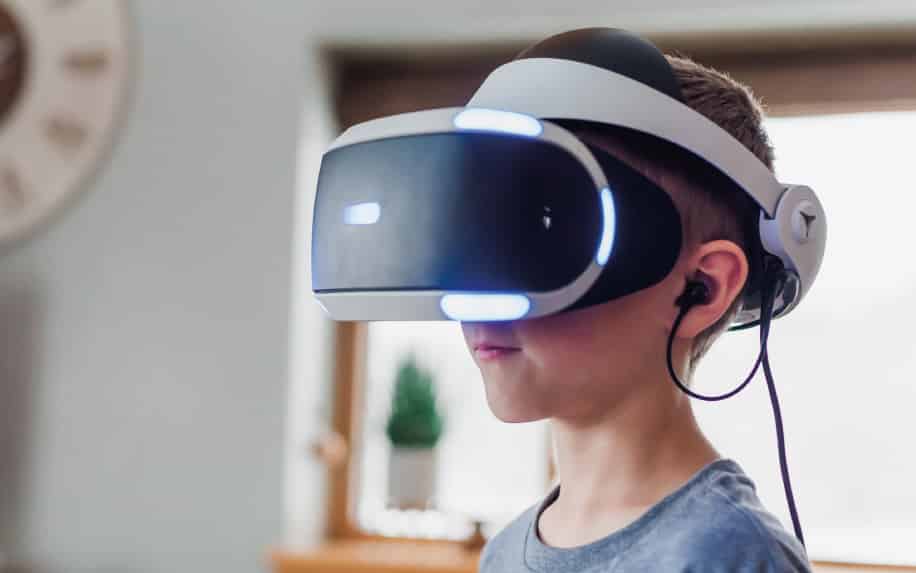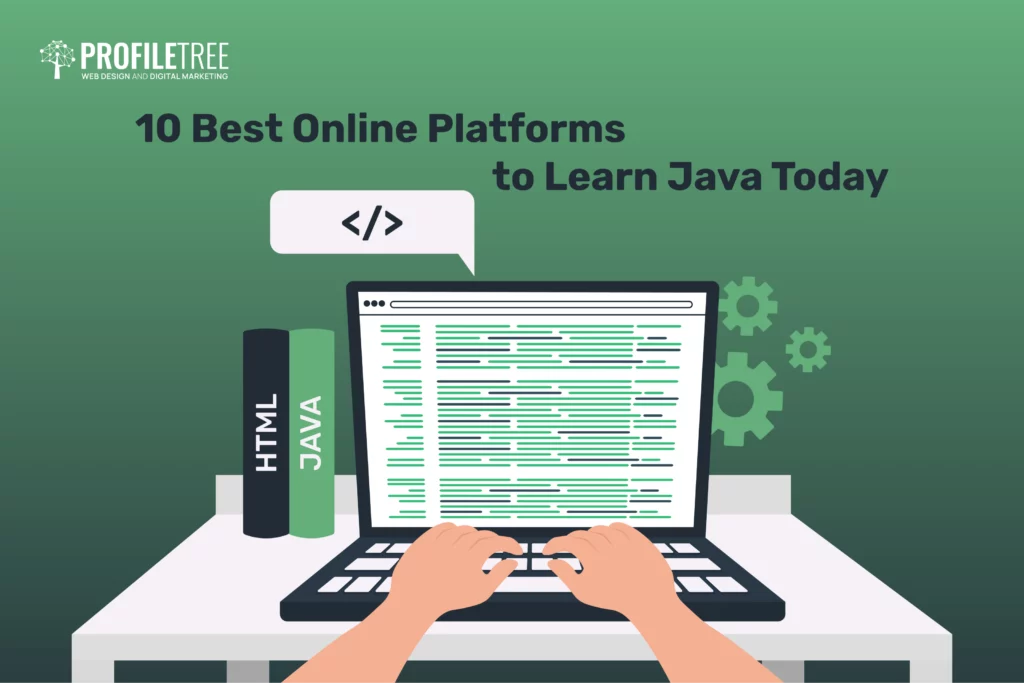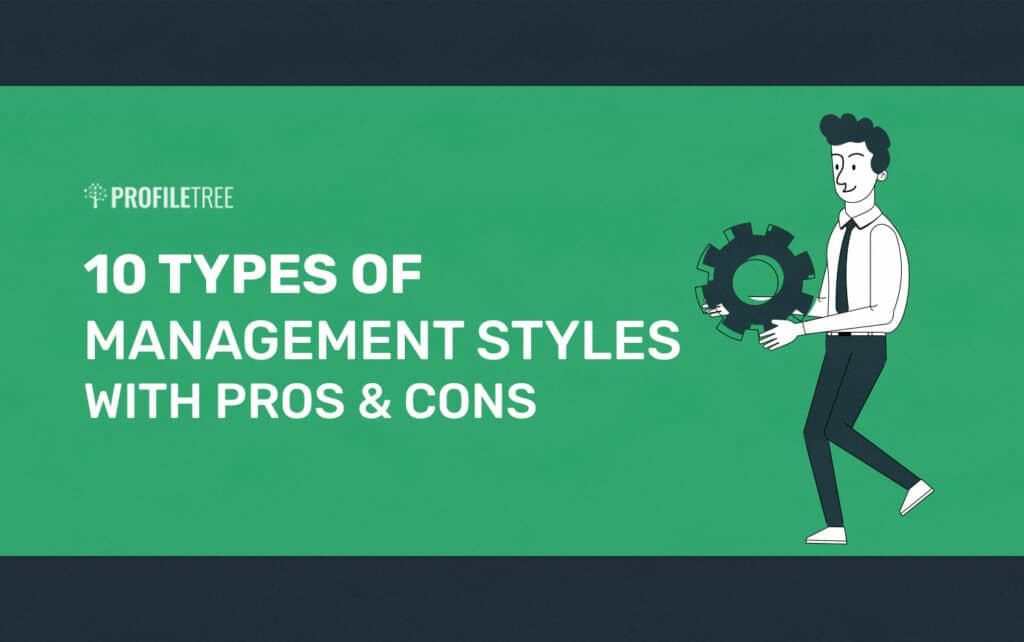Augmented Reality in Education – Imagine dissecting a virtual frog in biology class, exploring ancient Rome with dinosaurs roaming the streets, or solving 3D math problems with interactive holograms dancing before your eyes. No, it’s not a futuristic sci-fi movie—it’s the incredible world of augmented reality (AR), where digital elements seamlessly blend with our physical environment.
Unpacking the AR Toolbox:
At its core, AR overlays digital information onto the real world, enriching our perception and interaction with the surroundings. Think of it as a transparent filter layered upon your reality, adding interactive elements like 3D models, animations, sounds, and text. You can view these digital overlays through smartphones, tablets, dedicated AR headsets, or even smart glasses, essentially augmenting your experience of the physical world.
AR vs. VR: A Tale of Two Realities:
But AR isn’t alone in the realm of blurring realities. Often confused with its close cousin, virtual reality (VR), it’s crucial to understand how they differ:

- VR: Imagine putting on a headset and being transported entirely into a computer-generated world. VR immerses you in a fully fictional environment, cutting you off from the physical world. It’s like stepping into a life-sized video game or movie scene.
- AR: In contrast, AR keeps you firmly grounded in the real world. It doesn’t create a new environment but rather enhances the existing one by layering digital elements on top of it. Think of it as adding interactive annotations to your surroundings, enriching your perception of what’s already there.
The Power of the Overlap:
This unique blend of physical and digital realities unlocks a universe of possibilities. AR’s magic lies in its ability to:
- Boost engagement and learning: Imagine bringing historical figures to life in history class or visualizing complex scientific concepts in 3D. AR can transform dry subjects into interactive playgrounds, captivating students and enhancing their understanding.
- Revolutionize fields like education, healthcare, and manufacturing: Surgeons can visualize organs before surgery, engineers can overlay blueprints onto construction sites, and mechanics can troubleshoot equipment with interactive instructions. The possibilities are endless.
- Enhance everyday experiences: Imagine navigating with AR arrows guiding you through unfamiliar cities, translating signs and menus in real-time, or even playing Pokemon Go-style games where virtual creatures chase you down the street.
Stimulation during training or teaching can often be difficult to maintain. Long gone are typical classroom lessons – now, mixed reality is taking centre stage.
Mixed reality in education could be one of the most exciting developments in learning for many years.
Why? In our Business Leaders interview, Sentireal Co-Founder Nuala Trainor explains how mixed reality – that’s augmented reality and virtual reality – can be used in training.
Whether it be to boost productivity or showcase demonstrations – mixed reality can seamlessly fit into your business’s new approach. To find out how, check out our interview with Nuala below.
Table of Contents
Sentireal: Augmented Reality in Education, Bringing Mixed Reality to Life
In our interview with host Ciaran Connolly, Nuala began by explaining how the seven-year-old company supplies software platforms for training and guidance in mainly the medical industry.
Sentireal’s work comprises a unique blend of augmented reality, virtual reality and AI technology. This places the company at the cutting edge of mixed reality and its potential uses.
Nuala outlines how she explains terms like VR to potential customers.
“Virtual reality is generally what you would see when you put a headset on. And that could be cardboard head gear costing £5 and up, to higher-spec items costing hundreds or thousands. You become immersed in this virtual world, you put the headset on and you’re seeing maybe 360 video or computer-generated images.
“On the other side, you have augmented reality. I say to people ‘think of Pokemon Go’. With augmented reality, you are seeing this using a tablet or a phone. Say, in marketing, you would hold the tablet over a wine bottle and once it is triggered you’d see additional details and data.”
Talking about how far mixed reality technology has come, Nuala recalls when she first started working with mixed reality technologies.
“I distinctly remember having this computer – it was probably about half the size of the living room back then. We were working on it, and we had an application where there was a jumper on screen, then you could push a button and the jumper turned red.
“That’s the state mixed reality was in then – and look how we’ve progressed. Technology is truly amazing.”

Mixed Reality in Education
She explains how combining these types of mixed reality tech with AI can produce a highly tailored learning experience for end users, as well a convenient solution for trainers.
“We use mixed reality in our training and we then introduce AI. So the beauty of that, is that we can monitor the progress of our trainees as they are using our software platform for training and guidance. It will deliver content specific to each trainee, so it isn’t ‘one size fits all’.
“You could have ten people in the training room doing first aid training, for instance. Their progress will be monitored. The content will be delivered accordingly. Then the progress will also be sent back to the trainer. It’s relieving the burden for the trainer as well.”
While Sentireal’s services are popular in the healthcare sector, their work has also been applied in schools to help children with learning difficulties.
“In the past, we have done training for the education authority in Northern Ireland and that involved working with pupils with autism.
“With autism being a lifelong condition, one thing we identified was the condition transitions throughout school life. So we linked in with a local primary school as partners, and our apps are used by children with autism to help them prepare and practise these transitions in school before it happens in real life. It really is risk-free training.”
This poses a huge opportunity for the future of mixed reality in education, as Nuala emphasises:
“What struck me was we went into the classroom with these headsets, the future generation just couldn’t wait to try it on. With the amazement of virtual reality, it can be used to deliver any areas of curriculum. The children are so excited by it, so why not use it to your advantage?”

The Benefits of Mixed Reality
While mixed reality applications sound like the future of education, what are the exact benefits of this unique approach?
“Studies show that the immersive nature of the technology leads to high retention rate. With traditional lecture style, the average is about 10%. With this immersive training, because you are fully engaged with your senses aroused, it’s a totally captivating experience and the rates can be up to 75%.”
“This means huge learning outcomes and huge potential for so many industries. In the past it would have been used a lot in the military, for instance training soldiers before they go to Iraq.”
With this risk-free training, comes other benefits to general corporations – not just education and healthcare sectors, as Nuala states: “We do work with other organisations, with their main benefit of mixed reality being an increased rate of retention but also reduced costs.
“Mixed reality can be spread out over a lot of learners and it is not location based. Say you have offices throughout the UK – you can use this to deliver on a wider scale. You even can do it on a monthly subscription basis, so it can be accessed all the time on a more affordable level.”
Where there are many benefits from new, innovative technologies, there are always drawbacks.
“Sometimes there can be a bit of market reluctance to engage in these new technologies. But then there comes a tipping point and that is predicted to be soon. I see more acceptance of this mixed reality technology, so we are in a good position as a company to provide this when it booms.”
The Future of Mixed Reality
Technology is an ever-evolving industry. What was popular last year, might be dominated by something else. In these fast-paced times, what does the future look like for mixed reality technology?
“We imagine it will be completely commonplace. Like iPads – we wonder who ever asked for that, but now it is so common.
“You look at the young generation – 95% of young people have smartphones and can’t live without them. There’s less and less young people using laptops. People’s lives are combined in their phones, and mixed reality fits in seamlessly with that.”
To discover more about mixed reality and Nuala’s expertise, check out our full video.
If you want to enquire about Sentireal’s mixed reality services, you can find them via their website.
Unleashing Learning Magic: Benefits and Applications of AR in Education
The days of static textbooks and monotonous lectures are numbered. Education is undergoing a revolution, and augmented reality (AR) stands at the forefront. This innovative technology is no longer a sci-fi fantasy; it’s rapidly transforming classrooms into interactive playgrounds, igniting learning with a spark of digital wonder. Let’s explore the multifaceted benefits and current applications of AR in education:
Benefits: Engagement, Understanding, and Beyond:
- Boosting Engagement and Motivation: Forget glazed eyes and forced attention. AR injects excitement into learning, turning passive students into active explorers. Imagine dissecting a virtual frog in biology class, roaming the streets of ancient Rome alongside gladiators, or solving 3D math problems with dancing holograms. These immersive experiences turn learning into an adventure, boosting engagement and motivation while making knowledge retention effortless.
- Enhancing Understanding of Complex Concepts: Abstract concepts often leave students grappling in the dark. AR shines a light, visualizing the invisible and making the intricate tangible. Chemical reactions dance before their eyes, historical events unfold in their surroundings, and complex mathematical equations morph into interactive puzzles. This visual and interactive approach unlocks deeper understanding and demystifies even the most challenging subjects.
- Interactive Learning Experiences: Gone are the days of passive listening and note-taking. AR invites students to participate, play, and experiment. They can manipulate 3D models, conduct virtual experiments, and collaborate with classmates in augmented worlds. This interactive learning fosters critical thinking, problem-solving skills, and a deeper connection to the material.
- Catering to Different Learning Styles: Every student learns differently. AR recognizes this diversity, offering learning experiences tailored to visual, auditory, and kinesthetic learners. Visual learners benefit from the captivating imagery, auditory learners can tap into interactive audio guides, and kinesthetic learners can manipulate virtual objects and immerse themselves in the learning process. This inclusive approach ensures no student gets left behind.
Current Applications: Bringing Knowledge to Life:
Now, let’s paint the picture of how AR is already transforming classrooms:
- Interactive Textbooks and Manuals: Say goodbye to dusty tomes and flat illustrations. AR textbooks come alive with 3D models, animations, and interactive quizzes, providing an engaging and personalized learning experience. Imagine plants sprouting from textbook pages, historical figures stepping out of portraits, and complex anatomical structures rotating at your fingertips.
- Immersive History and Science Simulations: Travel back in time and walk alongside dinosaurs, or journey into the heart of a volcano without leaving the classroom. AR brings historical events and scientific phenomena to life, offering immersive simulations that transport students to the forefront of knowledge.
- Augmented Field Trips and Explorations: Ditch the crowded museums and traffic jams. AR transforms classrooms into portals to anywhere in the world. Explore the Great Wall of China virtually, climb Mount Everest, or dive into the coral reefs of the Great Barrier Reef—all from the comfort of your school. These augmented field trips provide safe and accessible windows to the world, sparking curiosity and broadening horizons.
- Enriched Lab Experiments and Modeling: Learning by doing takes on a whole new meaning with AR. Conduct virtual lab experiments, manipulating variables and observing reactions in real-time without the risk of accidents or expensive equipment. Build and manipulate 3D models of molecules, planets, or even entire ecosystems, gaining a deeper understanding through hands-on exploration.
- Supplement to Lectures and Demonstrations: Don’t just hear it, see it, and do it! AR complements traditional teaching methods by offering visual aids that bring abstract concepts to life. Overlay diagrams and animations onto real-world objects during demonstrations, making intricate processes easier to grasp and remember.
Gazing into the Crystal Ball: Future Possibilities of AR in Learning
The magic of augmented reality (AR) in education is just beginning to unfold. As technology advances, the possibilities for interactive and personalized learning stretch beyond our current imaginations. Let’s peek through the crystal ball and glimpse the future of AR in education:
1. Adaptive AR: Learning Tailor-Made for You:
Imagine AR experiences that adapt to your individual learning pace, strengths, and weaknesses. Through facial recognition, voice analysis, and real-time feedback, AR can personalize instruction, providing additional support where needed and offering deeper challenges when you’re ready. Picture virtual tutors adjusting the difficulty of math problems based on your performance, or historical simulations adapting to your preferred learning style, visual, auditory, or kinesthetic. This adaptive approach can revolutionize education, ensuring no student gets left behind and everyone reaches their full potential.
2. AI-Powered Learning Companions:
The future of AR in education isn’t just about technology; it’s about collaboration. Artificial intelligence (AI) will become a powerful ally, enhancing AR experiences with intelligent virtual assistants. Imagine AI-powered tutors providing personalized feedback, guiding students through complex concepts, and even offering encouragement and motivation. These virtual companions can fill the gaps in traditional teaching, providing students with 24/7 support and tailored learning pathways.
3. Beyond the Classroom Walls: AR for Workforce Training:
The transformative power of AR extends beyond the confines of traditional education. Imagine immersive virtual workshops where future technicians practice repairs on augmented machines, or surgeons train on realistic 3D models before entering the operating room. AR can revolutionize workforce training, providing safe and accessible simulations for diverse professions, from construction workers to astronauts. This hands-on learning approach will equip future generations with the skills they need to thrive in an ever-evolving job market.
Best Practices for Illuminating the Path:
To ensure a successful journey into the future of AR-powered learning, here are some guiding principles:
- Clear Learning Objectives and Outcomes: Define what students should learn and achieve through AR experiences. Align the technology with your curriculum and ensure it contributes to specific learning goals.
- Design Age-Appropriate and User-Friendly AR: Consider the developmental stage and needs of your students when designing AR experiences. Keep it simple, intuitive, and visually appealing to maximize engagement and avoid cognitive overload.
- Combine AR with Real-World Interactions: Don’t let AR become a digital island. Encourage students to interact with the physical world alongside the augmented elements. This blend of virtual and real will create a more holistic and engaging learning experience.
- Prevent Overuse and Monitor for Risks: Be mindful of screen time and potential negative impacts like eye strain or social isolation. Implement clear guidelines for AR use, encourage physical activity, and monitor students for potential risks.
Frequently Asked Questions About AR in Education:
1. What is AR and how can it be used in education?
Augmented reality (AR) overlays digital elements onto the real world, enhancing our perception and interaction with the surroundings. In education, this can include:
- Interactive textbooks and models: Visualize historical figures, explore anatomical structures, or solve 3D math problems in real-time.
- Immersive simulations: Travel back in time, explore foreign countries, or conduct virtual experiments without leaving the classroom.
- Personalized learning: Adapt the difficulty and pace of learning based on individual needs and preferences.
- Active engagement: Foster collaboration, critical thinking, and problem-solving through interactive experiences.
2. What are the benefits of using AR in education?
- Increased engagement and motivation: Students are more likely to be captivated by interactive learning than traditional methods.
- Improved understanding of complex concepts: AR can visualize abstract concepts and make them more tangible.
- Develops critical thinking and problem-solving skills: Students actively explore and manipulate AR elements, fostering these key skills.
- Provides a personalized learning experience: AR can adapt to individual learning styles and paces.
- Makes learning accessible and inclusive: AR caters to different learning styles and provides safe and accessible simulations for diverse subjects.
3. What are the challenges of using AR in education?
- Cost of technology and content: AR hardware and software can be expensive, and creating quality content requires dedicated resources.
- Need for educator training: Teachers need to learn how to effectively integrate AR into their lessons.
- Concerns about screen dependency: It’s important to balance AR use with physical activities and traditional learning methods.
- Accessibility and equity: Ensuring all students have access to AR technology and resources is crucial.
4. What are some best practices for implementing AR in education?
- Define clear learning objectives: Align AR experiences with your curriculum and learning goals.
- Choose age-appropriate and user-friendly tools: Keep it simple and intuitive for your students.
- Combine AR with real-world interactions: Encourage students to interact with the physical environment alongside the digital elements.
- Set guidelines for responsible AR use: Monitor screen time and discourage harmful habits.
- Stay informed and keep learning: Explore new AR tools, resources, and best practices continuously.
5. How can I learn more about using AR in education?
- Join online communities and forums: Connect with other educators using AR in their classrooms.
- Attend workshops and conferences: Learn from experts and explore the latest AR tools and resources.
- Read case studies and research: Discover how other schools are successfully implementing AR.
- Follow education technology blogs and websites: Stay up-to-date on the latest developments in AR education.
Conclusion: Embracing the AR Revolution in Education
The dust hasn’t even settled on the textbooks before augmented reality (AR) arrives to rewrite the narrative of education. It’s not just a fancy gadget; it’s a transformative force, injecting wonder and interactivity into every subject imaginable. Imagine dissecting virtual frogs in science, walking alongside dinosaurs in history, or solving 3D math problems with dancing holograms. These are not futuristic fantasies; they are the tangible possibilities offered by AR, a technology on the cusp of revolutionizing the way we learn.
The benefits are undeniable: increased engagement, deeper understanding, personalized learning, and a newfound love for knowledge. From classrooms bursting with interactive simulations to virtual field trips spanning continents, AR breaks down boundaries and brings the world alive. It caters to every learning style, empowers educators, and makes complex concepts accessible to all.
But this revolution won’t happen overnight. It requires vision, a spirit of exploration, and a willingness to embrace the unfamiliar. Schools and educational institutions must step up as pioneers, experimenting with AR and fostering a culture of innovation. The time for hesitant glances at tablets and passive screen time is over. It’s time to step into the world of AR, where learning comes alive, curiosity reigns supreme, and the next generation of explorers equips themselves with the skills to navigate a future as vibrant and diverse as the augmented worlds they explore.
So, what are you waiting for? Open your minds, grab your virtual tools, and join the educational AR revolution. The future of learning is bright, interactive, and brimming with possibilities, and the only ones who can truly shape it are those who dare to embrace the magic of augmented reality.
Want to Become One of Our Featured Business Leaders?
Our acclaimed Business Leaders series is one of a kind on YouTube, where we share amazing advice, tips and stories from business owners, managers and senior leaders.
If you want to give your business a shout out and share useful insights, simply drop us a message.


